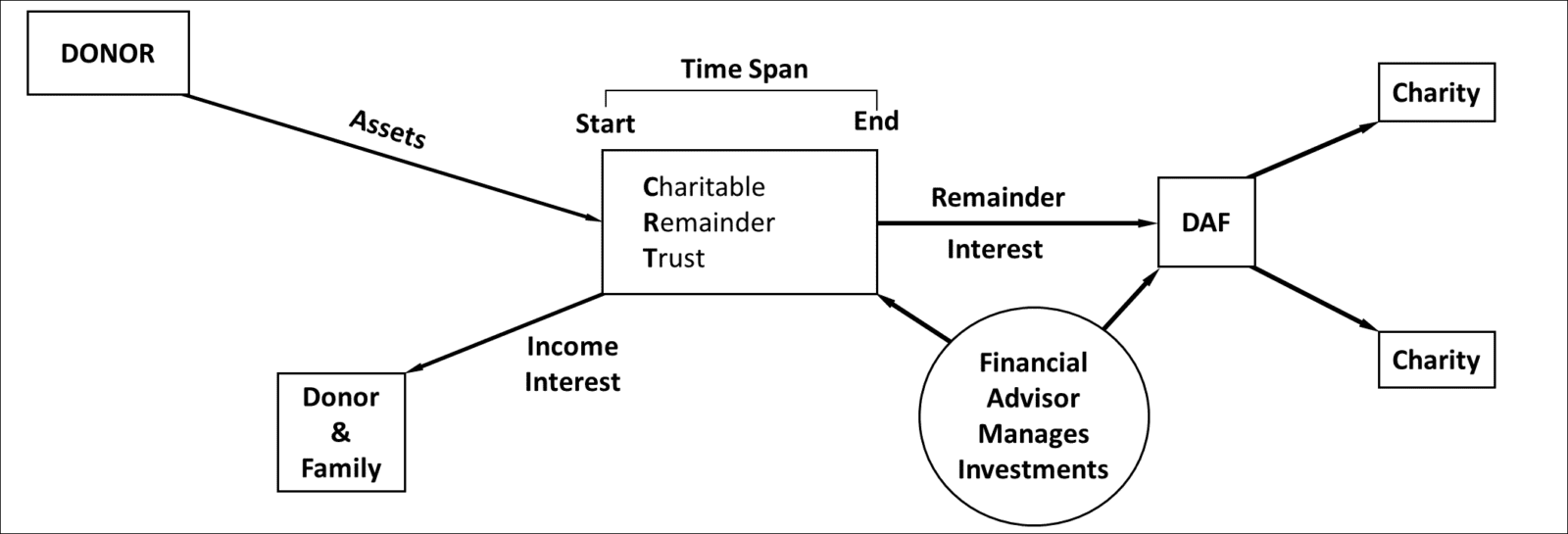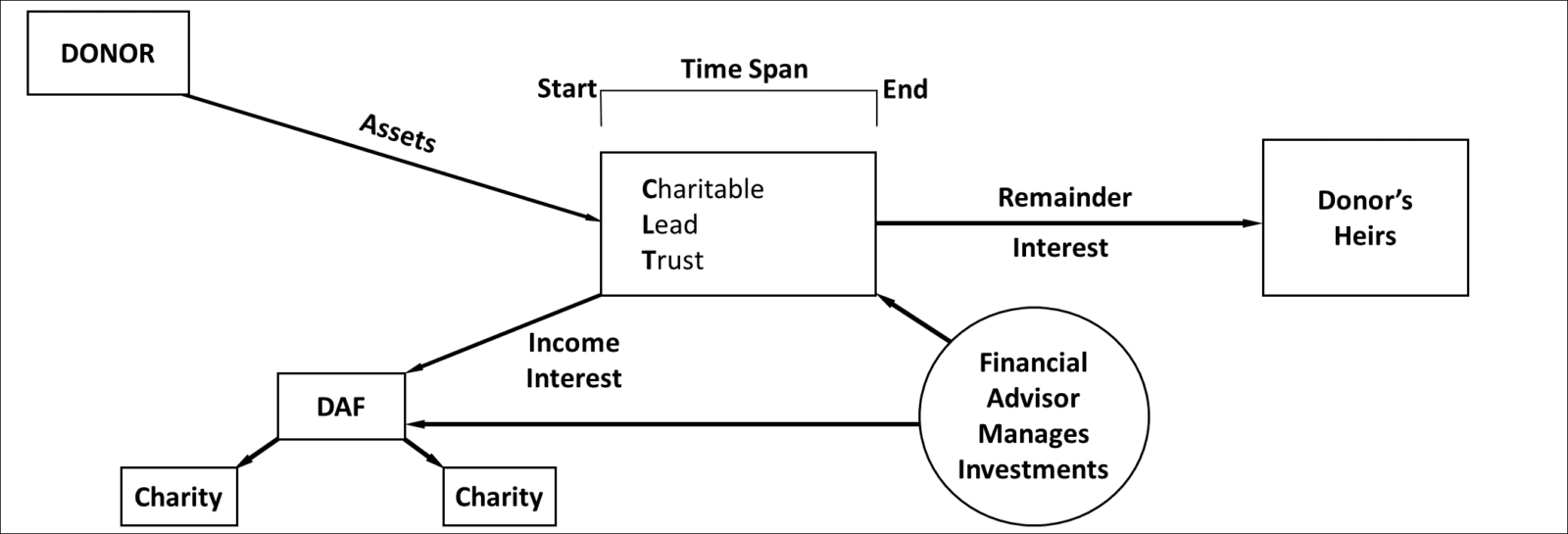Naming AEF as a beneficiary in a Charitable Remainder Trust
Donors can create an opportunity for continuing family involvement by naming American Endowment Foundation as the remainderman on a charitable remainder trust (CRT). Here’s how it works:
A donor contributes assets to a CRT, receives tax benefits and a lifetime income stream.
At termination of trust, the remainder interest is transferred to a donor advised fund at American Endowment Foundation.
A donor and their family can stay involved in these meaningful assets after the CRT terminates. The family can then recommend distributions from the donor advised fund to charities over time and their trusted financial advisor can remain involved in managing those investment assets.
Benefits:
- Continuing family involvement.
- This strategy eases the pressures associated with deciding the ultimate charities. AEF, an IRS recognized 501 (c)(3) charity, qualifies for the maximum and immediate tax deduction .
- The donor can use the donor advised fund as the vehicle for their lifetime charitable giving.
- When income from the CRT is no longer needed, the donor advised fund can become the charitable overflow to the CRT.
- If a donor wants to accelerate a CRT in order to give more to charity now or in the near future, he/she can collapse the CRT into a donor advised fund.
Naming AEF as income beneficiary on a Charitable Lead Trust
A donor contributes assets to a charitable lead trust (CLT) for a specified period (either a term of years or someone’s lifespan.) Distributions are made annually from the CLT to the donor advised fund (income interest.)The donor and their family recommend distributions periodically to charities from the family donor advised fund. After specified period, the principal (remainder interest) goes to the donor’s heirs (or other designated beneficiaries). The trusted financial advisor can remain involved in managing those investment assets of both the CLT and the DAF.
Benefits:
- Continuing family involvement.
- Provides a unique forum for families to work together.
- Offers the opportunity for several generations to join in a common purpose.
- May become the “link” that connects families whose branches are increasingly geographically dispersed.

